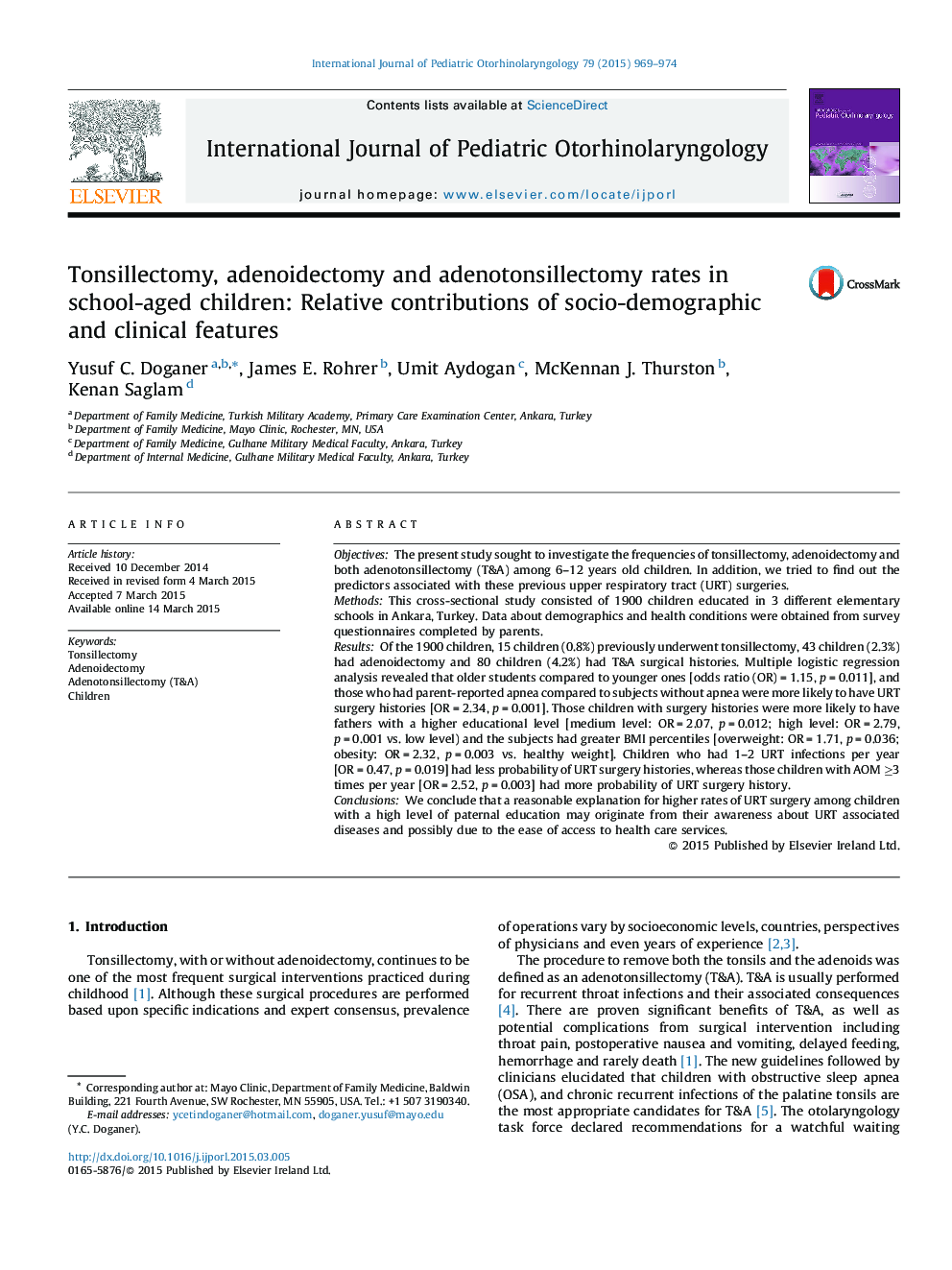| Article ID | Journal | Published Year | Pages | File Type |
|---|---|---|---|---|
| 4112168 | International Journal of Pediatric Otorhinolaryngology | 2015 | 6 Pages |
ObjectivesThe present study sought to investigate the frequencies of tonsillectomy, adenoidectomy and both adenotonsillectomy (T&A) among 6–12 years old children. In addition, we tried to find out the predictors associated with these previous upper respiratory tract (URT) surgeries.MethodsThis cross-sectional study consisted of 1900 children educated in 3 different elementary schools in Ankara, Turkey. Data about demographics and health conditions were obtained from survey questionnaires completed by parents.ResultsOf the 1900 children, 15 children (0.8%) previously underwent tonsillectomy, 43 children (2.3%) had adenoidectomy and 80 children (4.2%) had T&A surgical histories. Multiple logistic regression analysis revealed that older students compared to younger ones [odds ratio (OR) = 1.15, p = 0.011], and those who had parent-reported apnea compared to subjects without apnea were more likely to have URT surgery histories [OR = 2.34, p = 0.001]. Those children with surgery histories were more likely to have fathers with a higher educational level [medium level: OR = 2.07, p = 0.012; high level: OR = 2.79, p = 0.001 vs. low level) and the subjects had greater BMI percentiles [overweight: OR = 1.71, p = 0.036; obesity: OR = 2.32, p = 0.003 vs. healthy weight]. Children who had 1–2 URT infections per year [OR = 0.47, p = 0.019] had less probability of URT surgery histories, whereas those children with AOM ≥3 times per year [OR = 2.52, p = 0.003] had more probability of URT surgery history.ConclusionsWe conclude that a reasonable explanation for higher rates of URT surgery among children with a high level of paternal education may originate from their awareness about URT associated diseases and possibly due to the ease of access to health care services.
